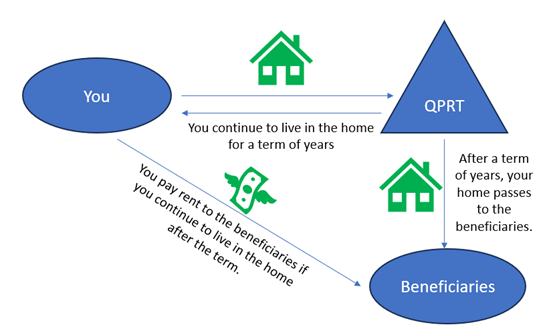April 30, 2024 | by RSM US LLP

Executive summary: Distribution options
Employers establish retirement plans to provide a vehicle to set aside monies, whether funded by the employee or the employer, to be preserved for a retirement benefit. The rules related to when an employee can take a distribution from their retirement plan account are restrictive considering the goal of preserving the retirement funds. SECURE 2.0, enacted on Dec. 29, 2022, included provisions that loosen some of the restrictions on withdrawals from a retirement plan. The additional options available give plan sponsors flexibility in choosing what to offer their employees.
In general
There are a few general concepts to keep in mind as we dive deeper into some of the provisions added by SECURE 2.0.
- A plan sponsor has discretion as to whether and how these optional plan provisions will be incorporated into the plan.
- All the distribution provisions discussed are exempt from the 10% tax on early withdrawals (i.e., before age 59½) from a retirement plan. However, the amount withdrawn is still subject to income tax.
- While income tax applies, there is the ability for an individual to recoup taxes, and restore their retirement savings, by re-contributing to the plan some or all the amounts withdrawn within three years of distribution.
- The provisions can be made available to any plan participant, not just a current employee.
Domestic abuse
A survivor of domestic abuse often needs access to additional funds to assist in escaping or recovering from an unsafe situation. “Domestic abuse” for this purpose is defined in SECURE 2.0 as: “physical, psychological, sexual, emotional, or economic abuse, including efforts to control, isolate, humiliate, or intimidate the victim, or to undermine the victim’s ability to reason independently, including by means of abuse of the victim’s child or another family member living in the household.” The survivor must certify that they experienced domestic abuse within the last year to receive a distribution that is no more than the lesser of $10,000 (for 2024, as indexed) or 50% of the survivor’s vested plan balance.
This distributable event became available, after Dec. 31, 2023, for implementation by an IRC section 401(a) defined contribution plan (including 401(k), but not money purchase pension plans), 403(a) annuity plan, 403(b) plan and a governmental 457(b) plan, as well as individual retirement accounts (IRAs).
Emergency personal expense
Unforeseen emergency situations that require immediate financial resolution are a common occurrence. This distributable event allows up to $1,000 of the participant’s plan account to be withdrawn. To receive the distribution, the participant must certify that they have an expense for themselves or a family member that is an immediate financial need. Only one such distribution can be issued in a calendar year. Another personal expense distribution cannot be issued in the three calendar years following the year of distribution unless the withdrawn amount is repaid to the plan or contributions made by the participant to the plan after the distribution are at least equal to the amount distributed.
Many plans already provide hardship distribution options for employees. However, the circumstances under which a hardship distribution can be issued are limited. For example, an employee’s car may require a $750 repair, which would not fall under one of the safe harbor reasons for hardship distribution. However, the employee could use the emergency personal expense provision to take a distribution to cover the $750 repair.
This distributable event became available, after Dec. 31, 2023, for implementation by an IRC section 401(a) defined contribution plan (including 401(k), but not money purchase pension plans), 403(a) annuity plan, 403(b) plan and a governmental 457(b) plan, as well as IRAs.
Federally declared disasters
Repeatedly, Congress has enacted legislation after disasters (e.g., hurricanes, floods, wildfires) providing individuals the opportunity to take a penalty-free distribution or loan from their retirement plan accounts to assist them as they rebuild their lives. In lieu of the disaster-by-disaster approach, Congress enacted permanent rules for distributions and loans related to federally declared disaster areas.
Key features of the new distribution provision are:
- A participant can request a distribution of up to $22,000 up to 180 days after the date of the disaster.
- The individual must have sustained an economic loss in relation to the disaster and must have a principal place of residence located in the disaster area.
- The tax effect of the amount withdrawn can be spread over three years rather than the entire amount being taxable in the year withdrawn.
Key features of the new loan provision are:
- The maximum dollar amount that can be made available is the lesser of 50% of the individual’s vested plan balance or $100,000 (increased from $50,000 under the normal loan rules).
- Loan repayments, whether on an existing loan or one taken because of the disaster, owed between the date of the disaster and up to 180 days after the disaster can be delayed for one year.
These provisions became available for disasters after Jan. 26, 2021, and can be implemented by an IRC section 401(a) defined contribution plan (including 401(k) plans), 403(a) annuity plan, 403(b) plan, and a governmental 457(b) plan, as well as IRAs.
Terminal illness
This provision was not added as a distributable event, but rather just as an exception to the early withdrawal penalty. Therefore, it only applies when a distribution is issued under another plan provision. The intention was to have this be an optional plan distributable event. There has been a technical corrections bill drafted that would address this, as well as some other SECURE 2.0 provisions, but it has not yet been finalized.
IRS Notice 2024-2 provides guidance on terminal illness distributions in the form of Q&As. The guidance confirmed the following:
- A terminally ill individual is one who has an illness or physical condition that a physician has certified is expected to result in death in 84 months or less. The 84 months is measured from the date of certification.
- Certification must be obtained prior to the distribution and contain specific information (e.g., the name and contact information of the physician, a narrative description to support the conclusion that the individual is terminally ill, the date the physician examined the individual, etc.) as outlined in Notice 2024-2.
- Only the physician’s certification must be provided to a plan administrator to support the distribution. However, the individual should retain appropriate underlying documents to support their distribution and as part of maintaining complete tax records.
- Generally, there is no limit to the amount that can be treated as a terminal illness distribution. However, distributions cannot be made solely because of a terminal illness. Therefore, the participant must qualify for a distribution based on another plan provision, and any limits applicable to the distributable event being utilized to issue the distribution would have to be considered. For example, a plan may allow in-service distributions, but it might cap such distributions to $10,000.
The provision became available after Dec. 29, 2022, for distributions from IRC section 401(a) defined benefit and defined contribution plans (including 401(k) plans), 403(a) annuity plans, and 403(b) plans, as well as IRAs.
Takeaway
Legislators see that employees have unexpected financial needs arise for which they need a source of funds. The only source, for some employees, with an amount sufficient to assist with the need is retirement plan savings. Relaxation of the distribution rules to provide an employee with a current source of funds may negatively impact the individual’s financial position in retirement overall but may also help encourage participants to contribute to their retirement plans by alleviating fears that their funds are not accessible when needed under extenuating circumstances. The opportunity is available for an employee to restore their retirement account by re-contributing the distribution taken, but how many individuals will avail themselves of this opportunity? Employees contemplating one of these distributions should consider 1) other sources of income that may be available to assist with the financial need, 2) the current tax ramifications of the withdrawal, and 3) how the reduction to their account balance will affect them in retirement.
Let’s Talk!
Call us at (209) 577-4800 or fill out the form below and we’ll contact you to discuss your specific situation.
This article was written by Christy Fillingame, Lauren Sanchez and originally appeared on 2024-04-30. Reprinted with permission from RSM US LLP.
© 2024 RSM US LLP. All rights reserved. https://rsmus.com/insights/services/business-tax/new-retirement-plan-distribution-options-introduced-by-secure-2-0.html
RSM US LLP is a limited liability partnership and the U.S. member firm of RSM International, a global network of independent assurance, tax and consulting firms. The member firms of RSM International collaborate to provide services to global clients, but are separate and distinct legal entities that cannot obligate each other. Each member firm is responsible only for its own acts and omissions, and not those of any other party. Visit rsmus.com/about for more information regarding RSM US LLP and RSM International.
The information contained herein is general in nature and based on authorities that are subject to change. RSM US LLP guarantees neither the accuracy nor completeness of any information and is not responsible for any errors or omissions, or for results obtained by others as a result of reliance upon such information. RSM US LLP assumes no obligation to inform the reader of any changes in tax laws or other factors that could affect information contained herein. This publication does not, and is not intended to, provide legal, tax or accounting advice, and readers should consult their tax advisors concerning the application of tax laws to their particular situations. This analysis is not tax advice and is not intended or written to be used, and cannot be used, for purposes of avoiding tax penalties that may be imposed on any taxpayer.




